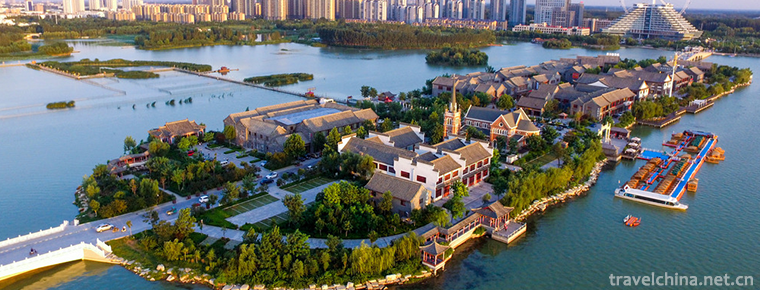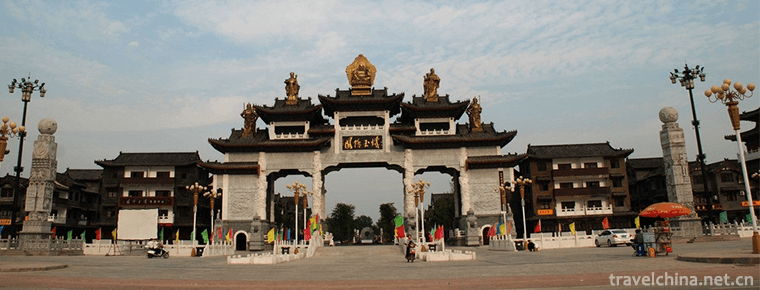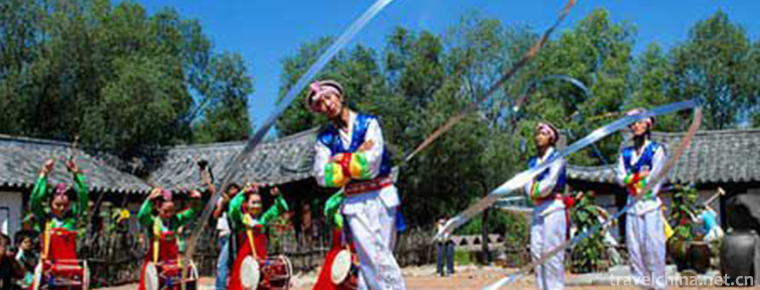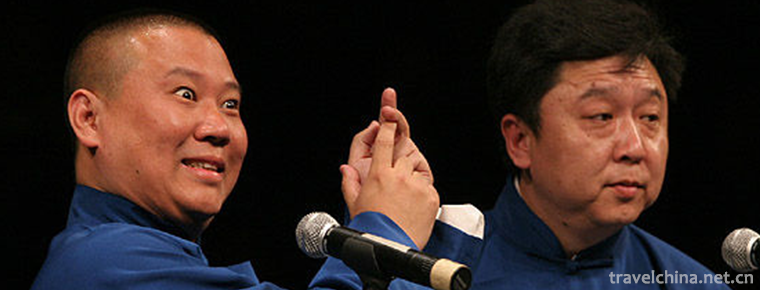History of Guangan
History of Guang'an
Guang'an belonged to Liangzhou in ancient times and Yongzhou in Yin and Shang Dynasties. In the fifth year of King Shenliang of Zhou Dynasty (316 BC), Qin destroyed Bashu and established Ba and Shu counties. Today, Guang'an District, Qianfeng District, Linshui county and Huaying City of Guang'an City are under the jurisdiction of Dangqu county (today's Qu county), wusheng County is under the jurisdiction of Dianjiang County (now Hechuan District), and Yuechi County is under the jurisdiction of Anhan county (now Nanchong City). During the Han and Jin Dynasties, the establishment remained unchanged.
In 479, in the first year of Jianyuan in the Southern Qi Dynasty, an early Han county (now wusheng County) was established to the north of Dianjiang (today's Hechuan District), which was subordinate to dongdangquliao County of Yizhou (now Chengdu City). In the third year of the Liang Dynasty (522 A.D.), Dangqu county was established as Shi'an county (today's Guang'an District), and was subordinate to beidangqu county (now Quxian county). In the third year of Datong (537), Linshui county was established in the east of Dangqu County, which belonged to the neighboring mountain county. In 556 (the third year of emperor Gong of the Western Wei Dynasty), the neighboring state was incorporated into Quzhou, and Linshui County belonged to Quzhou and Linshan county.
Sui kaihuang three years (583 years), Shi'an county to Quzhou. In the 18th year of emperor kaihuang (598), an County was changed to Xiaocheng county (now Guang'an District). In the first year of Daye of Emperor Yangdi of Sui Dynasty (605), he moved to wangjiaping, Xiaoxi township. In the third year of Daye (607), Quzhou was changed to Dangqu County, which still governed gacheng county and Linshui county.
In 618, in the first year of Wude of Tang Dynasty, Qicheng county was renamed as Shi'an County, and fengle county was established in some areas, and Hengsheng ancient town (now Hengsheng Town, Guang'an District) was governed by the ancient city village, which belonged to the West Road of Shannan. In the same year, the neighboring state was restored and Linshui county was governed. In 619, Linshui county was changed to Quzhou. Wude eight years (625 years), the abolition of fengle County, its land into Shi'an county. In 697, Nanchong county (now Gaoping District of Nanchong City) and Xiangru county (today's Pengan county) established Yuechi County, which belongs to Guozhou County of Jiannan road. In the first year of Tianbao of Emperor Xuanzong of Tang Dynasty (742), an County was changed to Qujiang County, and Quzhou County was changed to adjacent mountain county. In the first year of Qianyuan (758) of emperor suzong of Tang Dynasty, Quzhou was the neighboring mountain county, and Shian county and Linshui County belonged to Quzhou again.
In the 9th year of Song Dynasty, Huiqu, the leader of Suichuan County, was named as the second emperor of the Song Dynasty. Guang'an is the first name. In that year, Qujiang County, as the Fukuo County of Guang'an army, moved to the northeast of Nonghui town from wangjiaping, Xiaoxi. Song ningzong Kaixi three years (1207), added to lead Hexi county. In 1243, the Mongol army entered Sichuan, and Guang'an army moved to Daliang city (now Daliang village, Xiaojing Township, Guang'an District). Song duzong Xianchun second year (1266), changed Guang'an army into Ningxi army, the possession as old.
In 1267, the county was changed to wusheng army in the early Han Dynasty, and then upgraded to Dingyuan Prefecture. In 1275, the Ningxi army entered the Yuan Dynasty. In the same year, he moved back from Daliang city to Chonghui town. In 1278, the Western army of Ning was abolished and Xinming and Hexi counties were transferred to Yuechi, and Qujiang and Yuechi counties were transferred to Shunqing prefecture (now Nanchong City). In 1283, Guangan Prefecture was set up, which governed Qujiang County, led Qujiang County and Yuechi County, and was subordinate to Shunqing road. In the same year, Linshui county was incorporated into Dazhu County and changed into Linshui town. In 1287, Dingyuan Prefecture was reduced to Dingyuan County, belonging to luhezhou of Chongqing, Sichuan Province.
In 1371 (the fourth year of Hongwu reign of Ming Dynasty), Guang'an Prefecture was changed to Guang'an Prefecture, which was subordinate to Shunqing Prefecture and led to Qujiang and Yuechi counties. In 1376, Quxian county and Dazhu County were added. In 1377, Qujiang County was abandoned and merged into Guang'an Prefecture, which led to Yuechi, Quxian and Dazhu counties. In the first year of Chenghua (1465), Linshui county was added. In 1644, Zhang Xianzhong entered Sichuan and established the western political power.
In 1647, the Qing army destroyed the Daxi regime, and Guang'an Prefecture was incorporated into the territory of the Qing Dynasty. However, the city was still occupied by people, and the governing area was moved to Laisu village. In 1651, Suzhai moved to Zhushan village. In the fourth year of Kangxi's reign (1665), the government moved back to CHONGHUI Town, leading Yuechi, Quxian, Dazhu and Linshui counties. In 1668, Yuechi County was abolished and incorporated into Guang'an Prefecture. The other three counties were designated as Shunqing Prefecture, and the prefecture became a scattered Prefecture without leading the county. In 1669, Dingyuan county was withdrawn to Hezhou. In the 60th year (1721), Yuechi County was restored and was subordinate to Shunqing Prefecture, North Sichuan Road, Sichuan Province. In 1728 (the sixth year of Yongzheng reign), Dingyuan county was rebuilt, belonging to Chongqing government, Sichuan Province. In the third year of Xuantong (1911), the northern Sichuan civilian army occupied the city and established the "Great Han Shubei military government", announcing that Guang'an Prefecture was separated from the Qing government and served as the military government station.
In the first year of the Republic of China (1912), the "northern Sichuan military government" was abolished, and Guang'an Prefecture was subordinate to Xuanwei envoys in northern Sichuan. In 1913, Guang'an Prefecture was changed to Guang'an County. Guang'an County, Linshui county and Yuechi County are located in North Sichuan Road. In 1914, the northern Sichuan Road was changed to Jialing Road, with Guang'an County, Linshui county and Yuechi County attached to it. In the same year, Dingyuan county was renamed wusheng County, belonging to Dongchuan Road. In 1935, the Sichuan administrative supervision district was established, and the Sichuan government was unified. Guang'an and Linshui counties were the tenth administrative supervision area in Sichuan Province. Yuechi County and wusheng County belong to the 11th administrative supervision area of Sichuan Province.
In December 1949, Linshui, wusheng, Guang'an and Yuechi counties were liberated one after another.
In 1950, the Central People's government changed the supervision area of the Republic of China into a special area. Yuechi County and wusheng County belong to Nanchong District of northern Sichuan administrative region, and Guang'an County and Linshui County belong to Dazhu special area of Eastern Sichuan administrative region.
In 1953, Dazhu special area was abolished, Guang'an County was divided into Nanchong special area, and Linshui county was divided into Daxian District of northern Sichuan administrative region.
In 1968 and 1970, Nanchong district and Daxian district were successively changed into Nanchong area and Daxian area, and the subordinate status of each county remained unchanged.
On November 10, 1978, 16 townships and towns were designated from Guang'an and Yuechi counties to set up Huayun Industrial and agricultural demonstration areas. It was changed into Huaying City on February 4, 1985.
On July 2, 1993, the State Council approved the establishment of Guang'an Prefecture, which governs Guang'an County, Yuechi County, wusheng County and Linshui County, and administers Huaying City.
On July 31, 1998, Guang'an County was changed into Guang'an District.
On February 22, 2013, Guang'an District was divided into two municipal districts: Guang'an and Qianfeng.

History of Guangan
-
Tianmu Lake
Tianmu Lake is located eight kilometers south of Liyang City, Changzhou. It is named Tianmu Lake because it belongs to the remnants of Tianmu Mountain
Views: 166 Time 2018-12-06 -
Yashan Huahai Stone Forest
Yashan Huahai Stone Forest Tourist Area, located in Nanling County, Wuhu City, Anhui Province, is one of the important scenic spots in Anhui's "two mountains and one lake" tourism economic c
Views: 178 Time 2018-12-20 -
Dongchang Lake Scenic Area
Dongchang Lake Scenic Spot, located in the southwest of Liaocheng City, a famous national historical and cultural city, belongs to Dongchangfu District and is a national AAAA-level tourist scenic spot
Views: 160 Time 2018-12-20 -
nanling national forest park
Nanling National Forest Park is the largest nature reserve in Guangdong Province and a treasure house of rare animals and plants. The park is located in the core of Nanling Mountains
Views: 167 Time 2018-12-31 -
International Jade City
International Yucheng is located in the south of Shifosi Town, Zhenping County, Henan Province, on the south side of Yuyuan Avenue, south to Liulu Highway, east to Erlong Road, north to Longxiang Road
Views: 160 Time 2019-01-13 -
Xianghu Lake
Xianghu Lake is known as the "sister lake" of the West Lake for its beautiful scenery. It is a lake located in Xiaoshan District, Hangzhou City, Zhejiang Province, China. Xianghu Lake is als
Views: 197 Time 2019-02-25 -
Korean Agricultural Music and Dance
"Agricultural Music and Dance" is commonly known as "Agricultural Music", which is spread in the Korean community of Jilin Province, Heilongjiang Province, Liaoning Province
Views: 165 Time 2019-04-16 -
Haicheng Hornplay
Haicheng trumpet opera, the local traditional drama of Anshan City, Liaoning Province, is one of the national intangible cultural heritage.
Views: 363 Time 2019-05-02 -
Traveling Books in Ningbo
Ningbo Walking Book, originally known as "Lotus Document" or "Plough Document", is one of the traditional local operas in Ningbo, Zhejiang Province. Sing in Ningbo dialect. Ningbo
Views: 226 Time 2019-06-08 -
Cross talk
Crosstalk is a folk art of rap and singing. It takes the form of speaking, learning, teasing and singing to highlight its characteristics. Famous cross talk performers include Zhang Shouchen, Ma Sanli
Views: 254 Time 2019-07-03 -
Tie Muer Buhua
Tie Muer Buhua (1286 - 1368). Yuan will be the first to stay. Rate troops to go Xiangyang He won the battle with song, fan and Wen Hu in the Shigi shoal beach. Later from Bo Yan Song, in Yang Luo Bao
Views: 154 Time 2019-09-14 -
Panzhihua from the Ming Dynasty to the Republic of China
In 1382, in the 15th year of Hongwu reign of the Ming Dynasty, the Xuanwei Department of paloros put Yunnan under the jurisdiction of Sichuan Chengxuan political envoys. In this place, there is another commander's Department of Sichuan Xingdu, which leads the lawsuits
Views: 107 Time 2020-12-14










